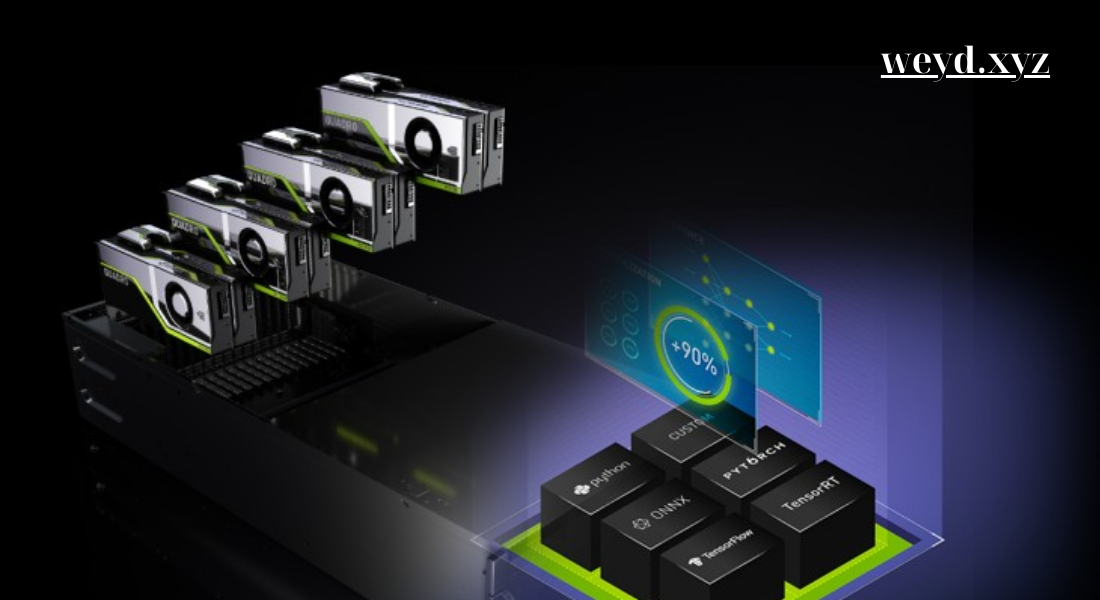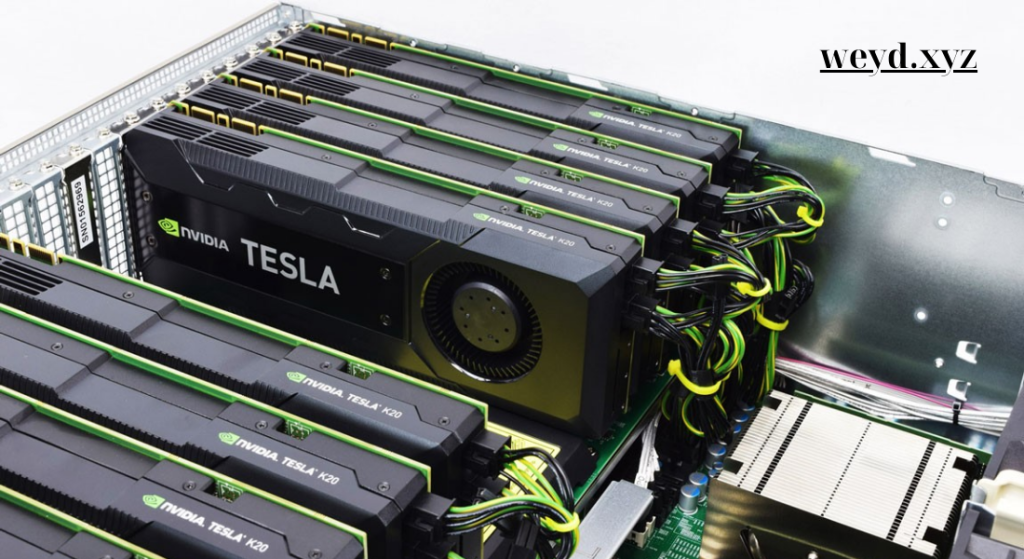Blog
NVIDIA Deep Learning: Pioneering the Future of AI and Advanced Computing
With breakthroughs across industries, NVIDIA has become synonymous with deep learning and AI advancements. From healthcare innovations to autonomous vehicles, NVIDIA’s technology powers some of the most complex applications of artificial intelligence today. Through innovations like the DGX systems, Tensor Core GPUs, and CUDA architecture, NVIDIA delivers performance that accelerates AI model training and deployment. This article explores how NVIDIA is shaping the landscape of AI with its deep learning technology, examining the core components, industry applications, and future possibilities.
1. The Evolution of NVIDIA’s Deep Learning Solutions
NVIDIA’s journey into AI began with GPUs designed for graphics but soon expanded into advanced computing:
- GPU Acceleration Roots: Originally designed for gaming and graphics, NVIDIA’s GPUs found applications in scientific computing, bringing speed to data-heavy tasks.
- CUDA Architecture: CUDA allowed developers to leverage GPU power for parallel computing, which became a key driver in AI acceleration.
- Tensor Core Technology: With the development of Tensor Cores, NVIDIA GPUs now support deep learning calculations, improving processing speeds for complex tasks.
- DGX Systems: NVIDIA’s DGX supercomputers provide a specialized platform for AI, supporting intensive model training and deployment on a large scale.
2. Core Technologies Behind NVIDIA’s AI Advancements

Several key technologies power NVIDIA’s AI capabilities, each tailored to enhance processing efficiency:
- Tensor Core GPUs: Featured in models like the A100, these GPUs support deep learning by handling mixed-precision calculations, enabling faster AI training.
- CUDA Programming Model: CUDA allows developers to tap into GPU power for parallel processing, crucial for accelerating AI and machine learning tasks.
- Deep Learning SDK: NVIDIA’s SDK provides essential tools and libraries, such as cuDNN and TensorRT, to optimize deep learning models on their hardware.
- Jetson for Edge AI: NVIDIA Jetson brings AI to edge devices like drones and IoT, allowing real-time processing directly on devices.
- DGX Infrastructure: NVIDIA DGX systems offer a dedicated solution for enterprises needing scalable, high-performance AI.
3. Transformative Industry Applications of NVIDIA’s Technology
NVIDIA’s innovations support groundbreaking applications across multiple fields:
- Healthcare Advancements: In medical research and diagnostics, NVIDIA’s technology accelerates tasks like image analysis, drug discovery, and personalized medicine.
- Autonomous Driving: With the DRIVE platform, NVIDIA supports real-time decision-making in self-driving cars, processing massive sensor data on the go.
- Retail Optimization: Retailers use NVIDIA’s solutions to enhance inventory management, predict trends, and improve customer experiences with AI-driven recommendations.
- Financial Services: In finance, AI models supported by NVIDIA help detect fraud, analyze markets, and manage risk in real time.
- Manufacturing and Industry 4.0: Predictive maintenance, robotics, and quality control are enhanced with NVIDIA’s tools, streamlining industrial operations.
4. NVIDIA DGX Systems: A Game-Changer for AI Performance
Built for the needs of AI, DGX systems provide the computational power required for serious deep learning projects:
- Efficiency in Model Training: With multiple GPUs working together, DGX reduces the time needed for training deep learning models.
- Enterprise-Level AI Support: Designed for large workloads, DGX is suitable for institutions and corporations that rely on high-performance AI.
- Scalability: DGX systems grow with organizational needs, making it easier to scale up AI capabilities.
- Software Integration via NGC: NVIDIA’s GPU Cloud (NGC) provides users with pre-trained models and software to simplify AI workflows.
5. Pushing the Boundaries of Autonomous Vehicles with NVIDIA
NVIDIA’s technology plays a crucial role in the development of autonomous vehicles, enabling safe and intelligent systems:
- The DRIVE Platform: Combining AI with automotive software, DRIVE allows for real-time, data-driven decision-making.
- On-Vehicle Data Processing: With models optimized for GPUs, self-driving systems process sensor data directly in the vehicle, reducing latency.
- Simulation Capabilities: DRIVE Sim offers a safe environment for training autonomous models, accelerating development through virtual testing.
- Continuous Updates: NVIDIA’s systems allow vehicles to receive over-the-air updates, ensuring that models are always improving based on real-world data.
6. NVIDIA in Data Centers: Supporting AI at Scale
For data centers, NVIDIA’s solutions optimize resources, providing robust support for large-scale AI and data processing:
- High-Density Computing: NVIDIA GPUs enable efficient use of space and power, allowing data centers to support more AI workloads.
- Cloud-Based AI Services: Data centers powered by NVIDIA offer AI as a service, including machine learning and analytics solutions.
- Energy-Efficient Processing: NVIDIA’s technology enables high performance while keeping energy use low, helping data centers reduce costs.
- Scalable for AI Needs: With a multi-GPU architecture, data centers can scale NVIDIA’s processing power to meet increasing AI demands.
7. Looking Ahead: The Future of NVIDIA in AI and Deep Learning
As AI continues to evolve, NVIDIA is committed to driving forward with new advancements:
- Next-Generation GPUs: NVIDIA is developing even more powerful GPUs that will support increasingly complex AI applications.
- Quantum and AI Integration: NVIDIA is exploring how quantum computing might work alongside GPUs to tackle sophisticated AI problems.
- Expansion of Edge AI: With 5G enabling more real-time processing, NVIDIA’s Jetson platform will bring advanced AI capabilities closer to the data source.
- Focus on Sustainability: NVIDIA continues to invest in energy-efficient technologies, reducing the environmental impact of AI processing.
Conclusion
NVIDIA’s advancements in AI technology have established it as a leader in the deep learning landscape. With powerful GPUs, comprehensive software ecosystems, and scalable infrastructure, NVIDIA supports industries in innovating and solving complex challenges. From healthcare to autonomous driving, NVIDIA’s technology provides the tools needed for data processing, model training, and real-time decision-making, shaping the future of AI and deep learning on a global scale.


